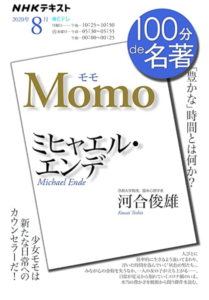Life Tips & Miscellaneous Navigation of this blog Travel , History , Sports and Arts Zen, Artificial Intelligence / Machine Learning, and Life Tips
About Communication
Communication refers to the processes and methods by which people exchange information, opinions, and feelings and understand each other using a variety of methods, including words, gestures, facial expressions, written words, and nonverbal means.
Communication is an important element in forming and deepening human relationships. It facilitates the sharing of information and understanding between individuals and groups, and takes various purposes and forms, such as conveying information, exchanging opinions, expressing feelings, solving problems, negotiating, and building relationships.
Effective communication requires respect for the other party and conveying information clearly and accurately. It is also important to show understanding and respond appropriately to the other person’s opinions and feelings. Such good communication facilitates relationships, solves problems, and builds cooperation.
Toshio Kawai and Michaela Ende
In this article, I will base my description on a commentary on Michael Ende’s MoMo written by Toshio Kawai, a well-known clinical psychologist.

Michael Ende (November 12, 1929 – August 28, 1995), best known as a writer of children’s literature, was a German author who created mainly fantasy and fantasy novels, many of which are world famous.
One of Ende’s best-known works is “The Neverending Story” (original title: Die unendliche Geschichte), a novel published in 1979 and adapted into a film in 1984 as “The NeverEnding Story.” The story is about a young boy, Atreyu, and his epic adventure in the fantasy world of Fantasia, and is known for its rich imagination that captivates readers.

Other Ende works include “Momo” and “Mirror in the Mirror” While these works also contain fantastical elements, they are characterized by their exploration of social themes and deep reflection on the human mind and imagination.

Toshio Kawai (February 4, 1927 – December 1, 2010) was a Japanese psychologist and psychiatrist, especially known and prominent in the field of family therapy and psychotherapy. Toshio Kawai was born in Tokyo, Japan. After graduating from Waseda University, he obtained his medical license and clinical experience as a psychiatrist, after which he devoted himself to the study of family therapy and psychotherapy, developing his own theories and methods.
He emphasizes the importance of family relationships and communication from the perspective of family therapy, which focuses on relationships, and also emphasizes understanding and treating patients’ psychological problems in relation to their family and social backgrounds. His theories and methods have influenced many psychologists and clinicians in Japan and abroad, and have contributed greatly to the spread of family therapy and psychotherapy.
Toshio Kawai has also enlightened a wide range of readers about human relationships and psychological issues through his books “The Theory of Human Relationships” and “Where Do Humans Come From? His writings reveal the depths of human relationships and the mind in easy-to-understand language, and have resonated with and gained the support of many people.
Momo” (original title: Momo)
The author’s own unique illustrations were the strongest in my memory, but I found it refreshing to read a commentary from a new perspective, interpreted by psychologists and others.
Momo” is a story about time thieves called the “gray men,” the townspeople whose time is stolen by the gray men, and the main character, a girl named Momo, and the people around her. The story is about Momo, who is passive at first, but through various experiences, finally rises up and saves the townspeople from the gray men.
In the commentary by Toshio Kawai, he describes the interpretation from the perspective of myths and tales, and the relationship between the binary structure and the old and young, which is connected to the overall theme of time.
From a psychologist’s point of view, it also describes Momo’s “listening to others” at the beginning of the story. The story goes on to say that Momo’s ability to “really” listen to others helped the people she talked to clarify their intentions, gain courage, and come up with ideas about what to do, making her an “indispensable person.
Listening “really” is not asking questions to get ideas out of the other person, it is literally just listening 100%. In the real world, psychological counselors sometimes take the time to listen to their patients and calm them down so that they can find a way out.
The act of being listened to can make a person feel at ease. Just the thought of being able to entrust something to the other person can be enough to calm the mind. The next step in the process is to make the person feel that something will come back to them and they will change.
As I mentioned in the previous article, “Cold and Warm Self-Knowledge,” people do not easily understand that even if you explain in theory that you are listening to them, they will only understand if they actually experience that you are listening to them. Communication is not only about expressing one’s own thoughts, but also about listening (silently) to what the other person has to say.
Momo’s story will move on to the subject of time, but I hope to talk about that another time.



コメント